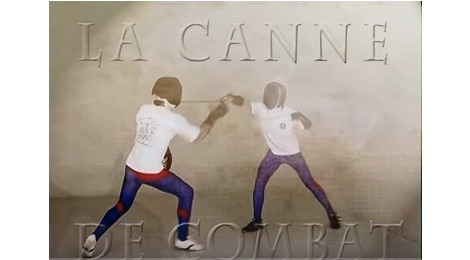La Canne de Combat is French for "combat cane" and is distinct from Bartitsu's walking stick self-defense. La Canne Francaise ("French cane") was a branch of savate, and remains a part of some savate schools. Pierre Vigny brought some of the aspects of La Canne to Bartitsu, with his own interpretations and modifications for the clothing and walking sticks of the English gentleman.
As we have done previously with savate (Mastering Savate), let's look at an online instructional video in La Canne, paying close attention to what we can learn to improve our Bartitsu technique, and also what points are markedly different from the methods we use.
In the 19th century, la canne was part of military training as a cheaper and safer alternative to practicing with sharp sabres, just as single stick fencing and cudgel fighting was in England and other parts of Europe. In the second half of the 19th century, la canne was integrated with savate for civilian sport.
One difference between the Clarmont style presented in the video and Bartitsu is the stick weight and material. In la canne, the stick is lightweight and made of chestnut with the intention that it will break if the strike is too violent for the safety of the fighter. In Bartitsu, we generally train with heavier sticks, the blackthorn of the shillelagh or malacca wood recommended by M. Vigny, especially those fitted with a steel ball. Due to the lightness of the stick in la canne, the combatant's grip is more extended than the hammer-style grip in Bartitsu, an observation made by Barton-Wright himself in the introduction to the third Pearson's article in the Bartitsu Compendium I (see page 225).
There are also no thrusts in the sport of la canne for safety reasons. By contrast, we consider the bayonet thrust to be central to the close fighting of Bartitsu and teach it in our first walking stick lesson.
However, similarities exist between the styles as well. For instance, in the vertical strikes from the inside and the outside, and the recommendation to strike with the last third of the stick.
Bartitsuka may glean two important lessons from this video. First of all, make note of the techniques for striking to develop the smooth transitions, speed and precision of these gentlemen. The second lesson is to be able to articulate the uniqueness of Bartitsu's approach to stick fighting and recognize the difference between sport and self-defense.
I hope my students will bring questions about this video to class for further discussion and practice.
